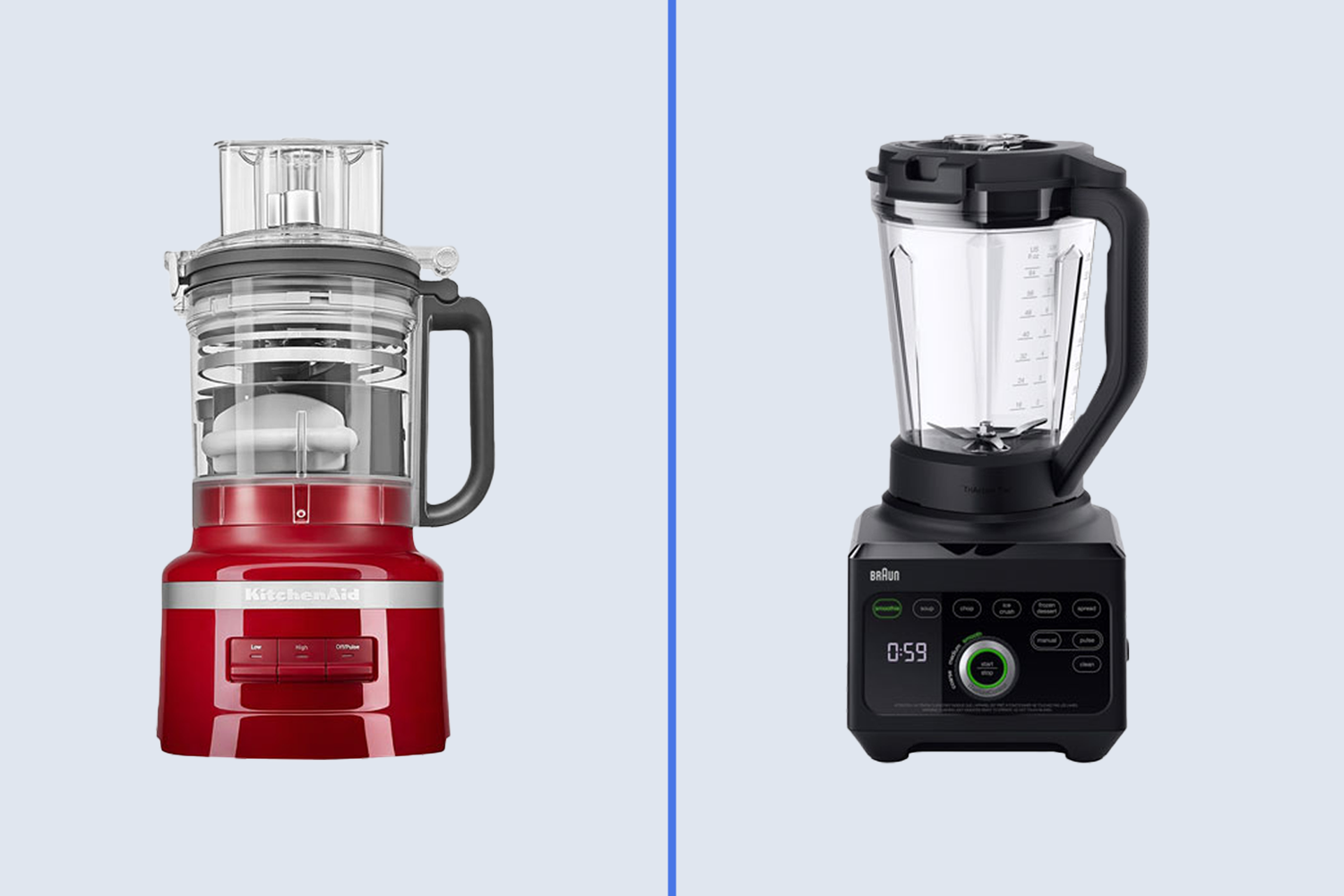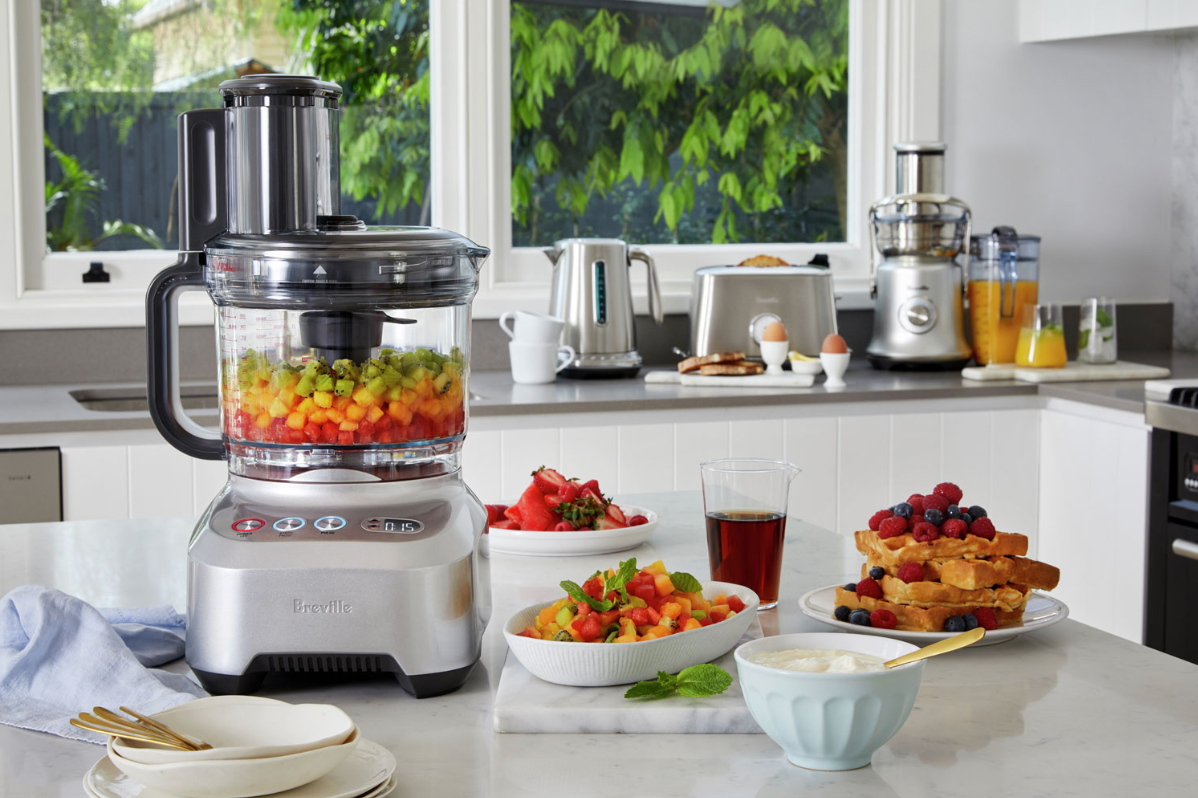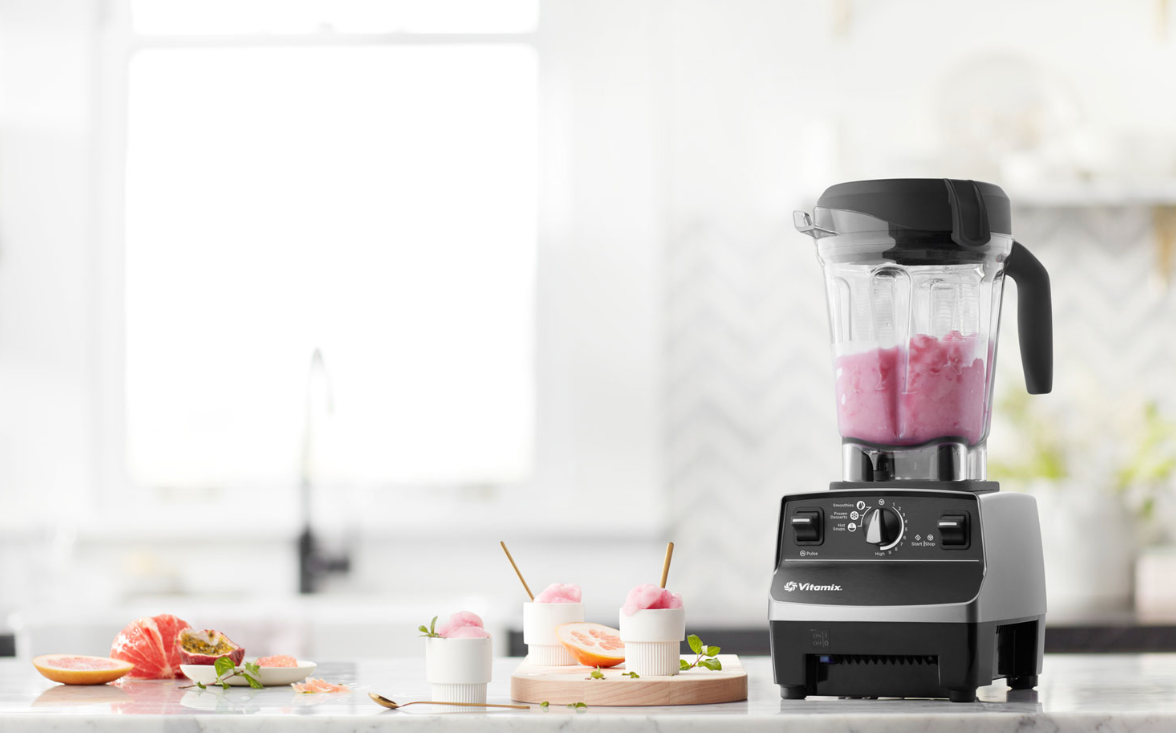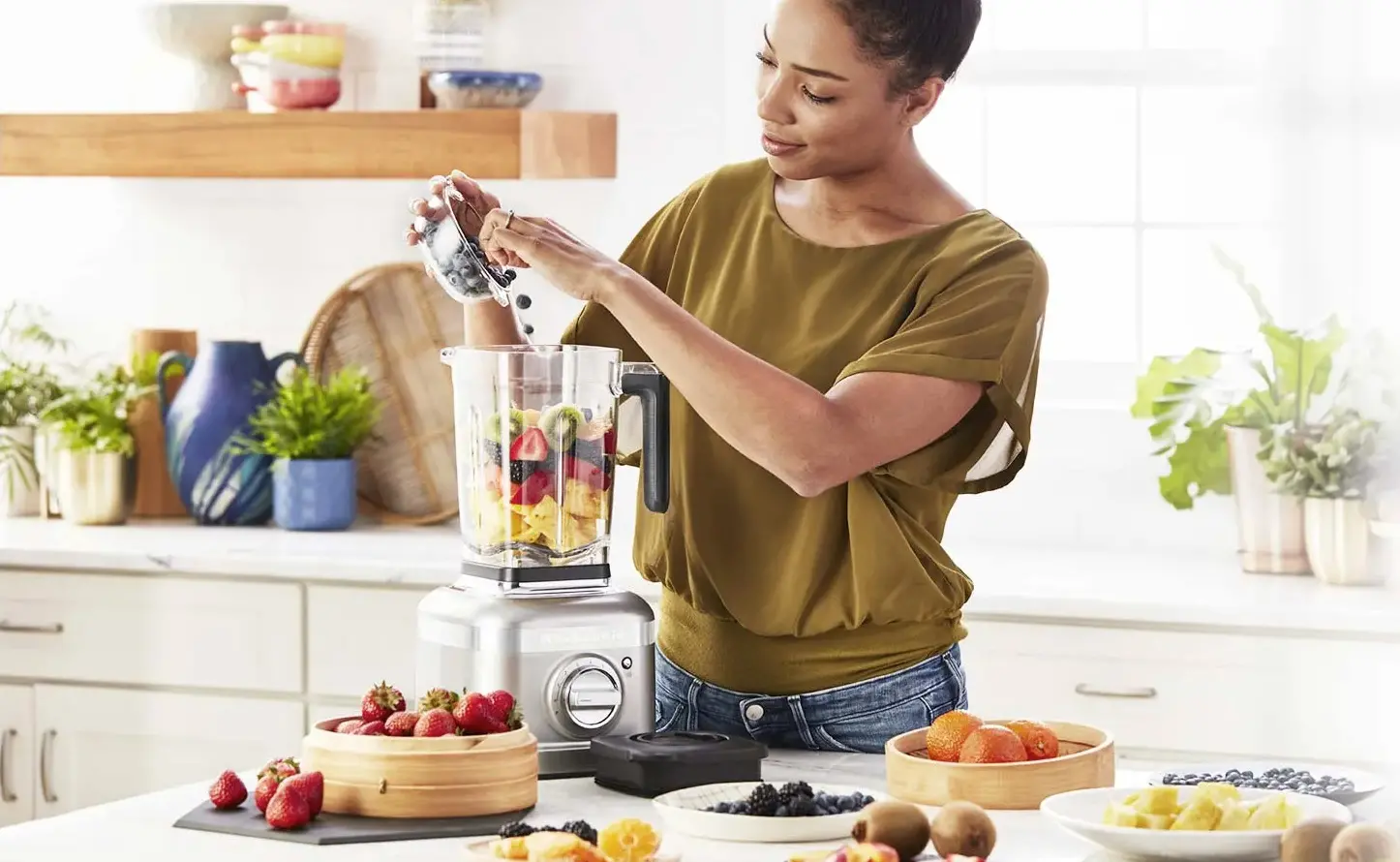
The conversation around the perfect kitchen appliance often boils down to two popular candidates: the food processor and the blender. These appliances offer different benefits and serve varied purposes. Which one should you pick? This article will delve into the characteristics of the food processor, mini food processor, countertop blender, and immersion blender. Finally, we will also answer common questions such as whether a blender can replace a food processor and vice versa to help you choose the best small appliance for your needs.
What is a food processor?
A food processor is a versatile kitchen appliance with a multitude of uses. It can chop, slice, shred, grind, and puree most food items. Standard food processors come with various attachments for different tasks, like slicing discs and shredding blades, making it an ideal tool for several food prep tasks. A mini food processor, a compact version of the standard food processor, can perfectly handle small jobs like chopping nuts or herbs, and it doesn’t take up much space on your kitchen counter.
Common uses of a food processor

Food processors are exceptional at handling complex tasks. They are handy for chopping vegetables, especially when you need to chop a large volume. With the right attachment, a food processor can slice and shred, so it’s a great tool for preparing salads or grating cheese. Food processors can also handle dough kneading for your favourite baked goods. For health-conscious cooks, a food processor is an excellent ally for preparing homemade nut butter, salsa, hummus, or pesto.
What is a blender?
A blender, specifically a countertop blender, is designed primarily for one task: to blend. It’s great at breaking down foods into liquid form, which makes it an excellent choice for smoothies, pureed soups, and baby food. A countertop blender often has a higher motor speed than a food processor, which allows it to handle hard foods like ice. On the other hand, an immersion blender, or hand blender, is a handheld device used to blend or puree food in the container it is being prepared in, such as soups, sauces, or smoothies.
Common uses of a blender

Blenders, especially the countertop versions, excel at liquid tasks. They’re great for making everything from smoothies to milkshakes. With their high-speed motors, blenders can crush ice for your smoothie or cocktail. An immersion blender is excellent for pureeing hot soup directly in the pot or whipping up a single-serve smoothie.
Can a food processor be used as a blender and vice versa?
Yes and no. A food processor can do some of the tasks typically done by a blender, like making smoothies or pureeing food. However, it might not produce the same smooth consistency due to its different blade design. Similarly, a blender can chop or grind, but it’s not as efficient at these tasks as a food processor.
Can you grind coffee in a food processor or a blender?
You can grind coffee in both a food processor and a blender, but keep in mind that they won’t deliver the same results as a dedicated coffee grinder. While they can break down coffee beans, they may not provide a consistent grind—especially for an espresso grind. Also, the high speed of these devices can heat up the beans, potentially affecting the coffee flavour.
Choosing the right tool for you

When deciding between a food processor, a mini food processor, a countertop blender, and an immersion blender, consider your cooking style and the space available in your kitchen. A food processor is a versatile tool ideal for complex tasks, while a blender is a better choice for those who regularly make smoothies or soups. The mini food processor is a space-saver perfect for small tasks, and the immersion blender is a handy tool for direct in-pot blending.
The food processor and blender, both in their full and mini versions, are fantastic additions to any kitchen. While they share some similarities, each shines in its own unique areas. A food processor excels at tasks involving chopping, slicing, and mixing doughs, while a blender, especially a countertop blender, is the king of liquid blends, including smoothies, pureed soups, and frozen drinks.
Choosing between these devices ultimately depends on your specific needs. If you often prepare doughs, chop vegetables, or make nut butter, a food processor, or even a mini food processor, would be an excellent choice. On the other hand, if you love smoothies, pureed soups, or need to crush ice frequently, a countertop blender or an immersion blender would suit you best. But remember that while both devices can grind coffee beans in a pinch, neither can replace a dedicated coffee grinder for flavourful, consistently ground coffee.
Take your cooking skills to the next level with the right appliance
In the end, having both appliances in your kitchen would give you the most culinary flexibility. However, if you must choose one, consider your cooking habits and kitchen space to guide your decision. With either a food processor or a blender in your arsenal, you can take your culinary adventures to new, exciting heights.
This article was drafted using AI technology and then reviewed, fact-checked, and revised by a member of our editorial team.




